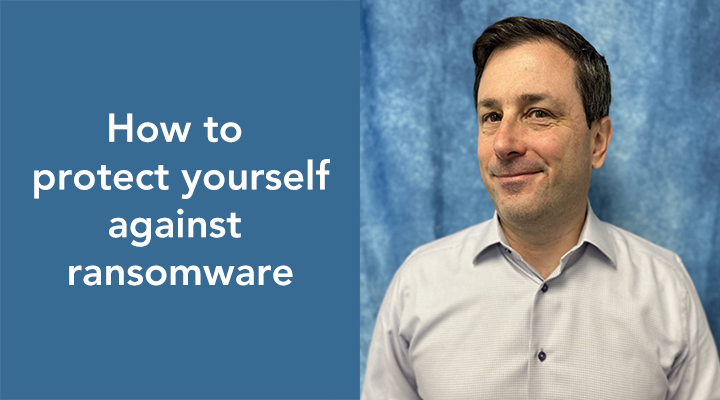Let me guess — you didn’t start your business because you were dying to manage software updates and firewall settings. Most small business owners I know would rather scrub their inbox than figure out why their backup didn’t run last night.
But here’s the truth: virtually every company is now a technology-dependent organization, whether you meant it to be or not. The bad news? You need to make smart IT decisions. The good news? You don’t need to be an expert to make them. You just need some small business IT strategy — preferably aided by someone in your corner who knows their stuff, such as an outsourced IT expert.
What Most Businesses Miss in Their IT Setup
If you’re a B2B company in Greater Philadelphia — say, a manufacturer in Norristown or a service firm on the Main Line — your tech priorities probably sound familiar: secure your data, keep your internet and Wi-Fi humming, and use tools that help your team work without drama. In the office. On the road.
The problem? Most owners deal with IT like it’s plumbing. Nothing happens until something breaks — and then you call a guy. That “call-a-guy” model is fine until you’re the one calling at 7 a.m. before a client pitch because your Wi-Fi is down again.
Here’s the kicker: unplanned downtime costs small businesses an average of $427 per minute. And that doesn’t count the hit to your team’s morale, your customer experience, or your blood pressure.
And that’s why I’m writing about the essential small business IT strategy any owner needs to incorporate into a modern, competitive company — no matter its size.
Cybersecurity Isn’t Optional Anymore
I used to say cybersecurity was like locking your front door. Today? It’s more like installing a deadbolt, setting up security cameras, and adopting a German Shepherd named Firewall.
Why? Because 43% of cyberattacks now target small businesses, and most victims don’t even know they’re vulnerable until after it happens. If you’re using weak passwords, skipping updates, or backing up data to a thumb drive you bought at Staples five years ago, you’re playing with fire.
A Few Essentials You Can’t Skip
Here’s what “bare minimum” protection looks like in 2025:
– Two-factor authentication (everywhere, not just email).
– Quarterly security awareness training for your staff.
– Verified, off-site backups that are tested regularly (not just “we think they’re working”).
And please, for the love of your future self, don’t back up your files to the same drive that’s continuously plugged into your network. If ransomware hits, that backup goes down with the ship.
The Smart Way to Outsource Your IT
Outsourced IT isn’t a luxury anymore — it’s how small businesses get enterprise-level protection without hiring a CISO and a tech team.
And yes, outsourced IT is safe. In fact, it’s safer than doing things piecemeal with freelancers or a cousin who “used to do IT.” Especially if you’re in a regulated industry like healthcare, legal, or financial services — or if your clients are, because their compliance rules become your compliance burden. And that’s an important part of small business IT strategy that you need to weave into your operations and technology.
Think of it this way: A good outsourced IT partner isn’t just fixing things. They’re preventing things, creating roadmaps, and translating tech into business terms. They’re your tech quarterback.
Cloud Smart, Not Cloud Silly
I’ll admit, I was once a cloud skeptic. Now I’m a fan — when it’s done right.
The cloud lets you scale fast, access data from anywhere, and stop worrying about the server in your closet that sounds like it’s dying. But “done right” matters. That means:
- Secure login controls
- Regular audits
- Tools that integrate, not just coexist
It also means not chasing every shiny new SaaS tool your team hears about on LinkedIn. If your apps don’t talk to each other, you’re just layering complexity. We see clients save up to 30% just by consolidating overlapping subscriptions.
Do You Even Have an IT Strategy?
Here’s what I ask new clients:
- What’s your biggest tech headache right now?
- What happens if your systems go down for 24 hours?
- Who owns your tech roadmap?
If the answer to #3 is “uh… me, I guess?” then it’s time to rethink. A fractional IT manager can give you that long-term vision without full-time payroll costs. That’s business continuity planning, tech vendor management, hardware forecasting — all rolled into a voice you can actually understand, all available as outsourced IT from the same company that sets up your new computers and adds cybersecurity to your network. It’s often the key to a small business IT strategy that works in the real world.
The Productivity Question No One’s Asking
Are your tools making you faster? Or just busier?
Most teams use a Frankenstein stack of freemium apps and makeshift workflows. That’s fine when you’re small. But as you grow? You need integration. That might mean switching to Microsoft 365 with Teams for your frontline workers, or ditching a patchwork of tools for one secure, supported platform.
One client cut task-switching by 42% just by syncing calendars, chat, and file-sharing under one roof. That’s the kind of gain that buys you back your time — and sanity.
Let’s Make Tech an Asset, Not a Chore
You don’t need to love IT. That’s my job. What you need is a setup that works while you sleep, scales when you grow, and doesn’t implode when your office manager takes a vacation.
If you’re ready to shift from reactive to proactive, let’s talk. I’ll bring the coffee. No jargon, no hard sell. Just real answers from someone who’s been in your shoes — and knows the way out of the forest.
Because building a tech-ready business shouldn’t feel like taking on a second or third job.




